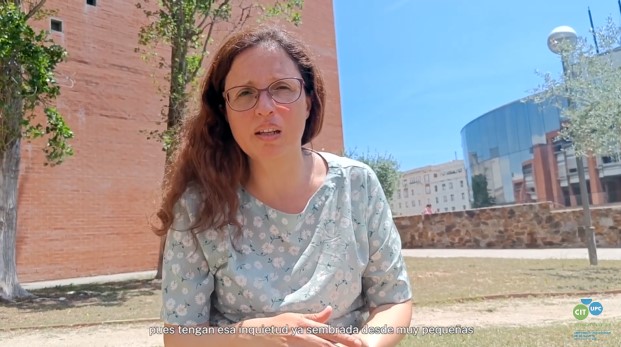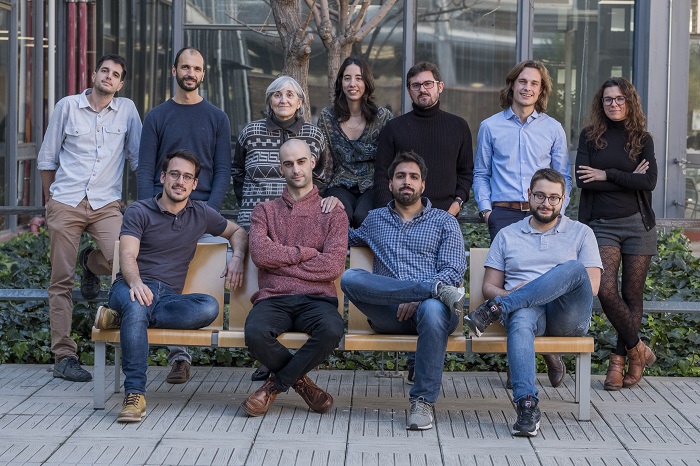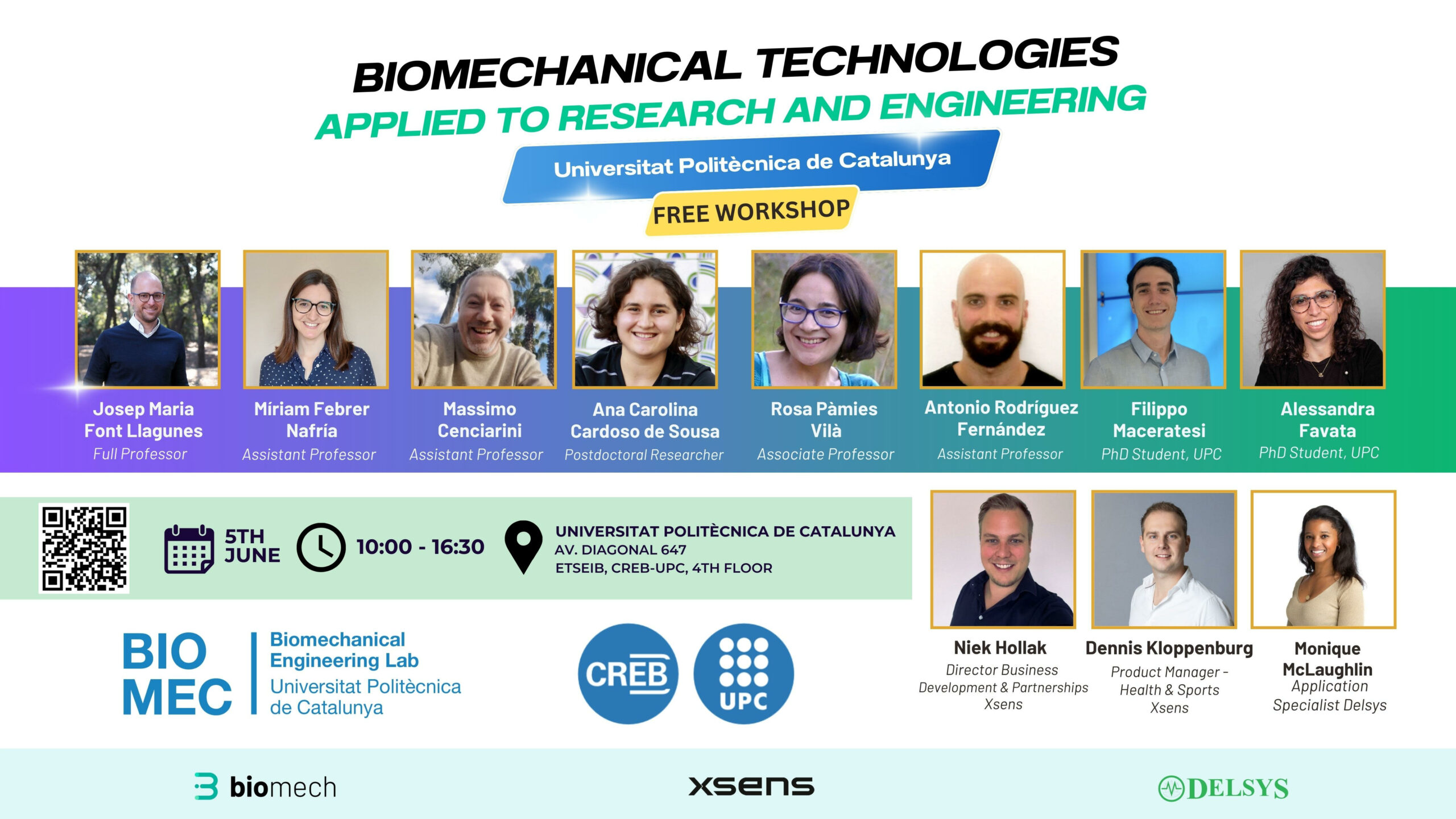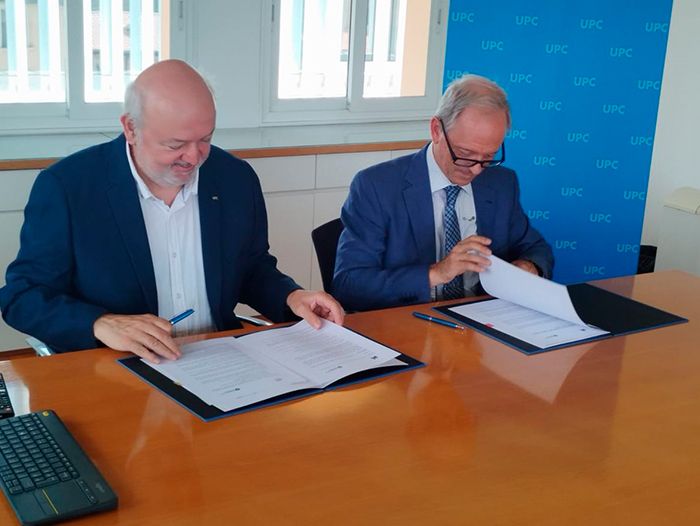Mónica Rojas, a prominent researcher at the BIOART Research Group within the Biomedical Engineering Research Center (CREB) of the Universitat Politècnica de Catalunya (UPC), shares on an interview with CIT-UPC the significant strides in the field of neurorehabilitation that her group is getting on the project HybridNeuro. This project, funded by the European Union, aims to enhance capabilities in the field of motor rehabilitation and neuromuscular disorders. With the collaboration of renowned institutions such as Imperial College London and Chalmers University of Technology, HybridNeuro focuses on merging knowledge in electromyography (EMG) and electroencephalography (EEG) to develop new applications in rehabilitation, sports, and ergonomics. Mónica Rojas reveals the details of the HybridNeuro project, the technologies developed, and their potential impact on improving people’s quality of life. Additionally, she will address crucial topics regarding gender equality in science and technology, and strategies to attract more female talent to these fields. What is the HybridNeuro project, and what is its main objective? Who is involved? The HybridNeuro project is a Twinning action of the European Union aimed at enhancing the research capabilities of the University of Maribor (Slovenia) in motor rehabilitation and neuromuscular disorders, as well as in technology transfer and research exploitation. The project builds on the expertise of three leading institutions in neurorehabilitation within the EU: UPC (Spain), Imperial College London (UK), and Chalmers University of Technology (Sweden). These centers are widely recognized for their contributions to neural control extraction for voluntary movement control, whether from EMG signals (electromyography, analyzing muscle activity) or EEG signals (electroencephalography, measuring brain activity). The idea is to merge knowledge in these two areas—hence the name HybridNeuro—to enhance applications in motor rehabilitation, sports, ergonomics, and more. Additionally, the UPC Innovation and Technology Center (CIT UPC) is involved. What is BIOART working on for this specific […]
A research group from the Biomedical Engineering Research Centre (CREB) at UPC and the Sant Joan de Déu Research Institute (IRSJD), has created EpiGe, a new web application that enhances the speed, accuracy, and cost-efficiency of analyzing and interpreting the molecular subtypes of medulloblastoma. This tool is pivotal for individualized treatment of this malignant brain tumor, predominantly affecting children and young adults. Understanding Medulloblastoma Medulloblastoma is a highly malignant brain tumor that represents approximately 20% of all brain tumors in children and young adults. Accurate classification of the molecular subgroups of medulloblastoma is essential for oncologists to develop the most appropriate treatment plans for each patient. Traditionally, these classification systems are costly and time-consuming, often taking several weeks to yield results, which limits their accessibility for many treatment centers worldwide. A New Clinical Decision Support Tool The multidisciplinary team, including experts from the Biomedical Engineering Research Centre (CREB) at UPC, IRSJD, and Sant Joan de Déu Hospital, has developed a clinical decision support tool designed for rapid, precise, and straightforward classification of the main molecular groups of medulloblastomas. Utilizing accessible technology, this tool aims to support centers globally in providing better care for pediatric brain tumor patients. To facilitate its application, the research group has developed an interactive web platform that enables automated analysis and interpretation of medulloblastoma types. The advancements achieved in this project have been swiftly translated into clinical practice, aiding in the individualization of patient therapy based on the genetic characteristics of the tumor, thereby offering more effective and less toxic targeted therapies. The Development of EpiGe EpiGe application was funded with support from patient family associations at Sant Joan de Déu Hospital, the Marató de TV3, and the Ministry of Science, Innovation, and Universities. This initiative underscores the growing importance of molecular classification in medulloblastoma for […]
The BIOMECH Lab group organizes at CREB a free and complete workshop on Biomechanical Technologies applied to research and engineering. This session aims to explore cutting-edge technologies and their applications in biomechanics, with the participation of numerous professionals and practical cases that show first-hand the challenges and innovations of the sector. Offered at the School of Industrial Engineering of Barcelona (ETSEIB), Universitat Politècnica de Catalunya, the workshop looks to achieve the following objectives: Disseminate the research lines and projects of BIOMEC Lab UPC.Demonstrate the performance of Xsens and Delsys solutions.Provide hands-on examples of motion capture and surface electromyography using Xsens and Delsys systems Here the key details:
On June 22, the BIOMEC research group from CREB UPC, in collaboration with the Institute of Robotics and Industrial Informatics and the Sant Joan de Déu Hospital, showcased the ongoing developments of the ArmTracker project to the public. The project aims to create a portable system for evaluating the motor function of patients diagnosed with Duchenne muscular dystrophy and spinal muscular atrophy.
AMES Medical and the Universitat Politècnica de Catalunya - BarcelonaTech (UPC) have recently renewed their collaborative agreement, ensuring the continuation of the AMES Chair in design and innovation of new biomaterials. Located at the UPC's Diagonal-Besòs Campus, the AMES Chair, plays a vital role in promoting education, research, result transfer, and scientific dissemination in the field of additive manufacturing for metallic biomaterials.







